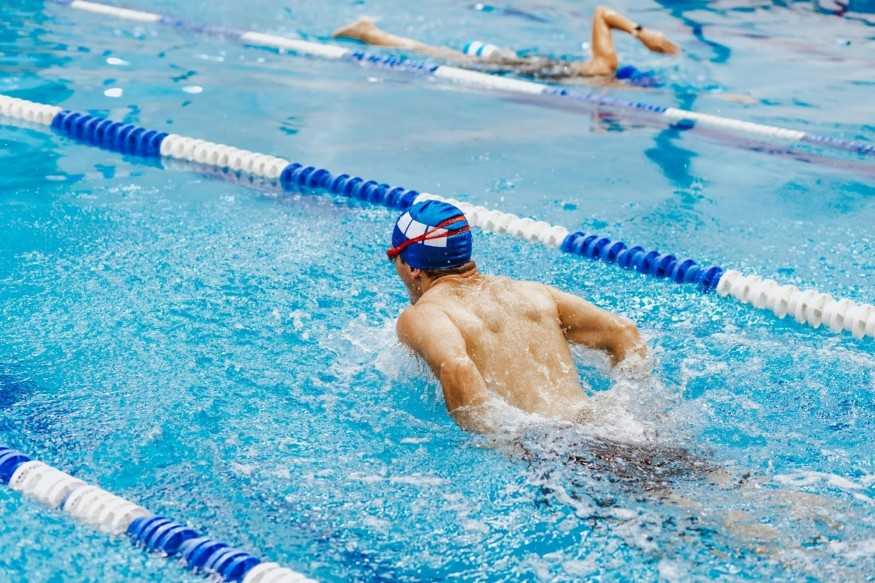Swimming is more than just a recreational activity—it's an effective way to enhance cardiovascular health, build endurance, and support physical well-being as a full-body workout that's gentle on the joints. Each stroke offers varying levels of intensity, enabling swimmers to tailor their sessions to their individual goals.
Structured workouts, breathing techniques, and consistent effort contribute to long-term health. As noted by Evyatar Nitzany, with the right approach, swimming becomes not just exercise, but a lifelong habit that supports a healthy cardiovascular system while keeping fitness engaging and enjoyable.
How Swimming Strengthens the Cardiovascular System
Swimming engages muscle groups in continuous, rhythmic motions, making it a powerful cardiovascular workout. This sustained activity increases heart rate and improves circulation, promoting better oxygen delivery throughout the body. As a result, the heart becomes more efficient at pumping blood, which can reduce resting heart rate and improve overall endurance. This efficiency supports daily energy levels and can positively impact other forms of physical activity.
Unlike high-impact exercises such as running, swimming places minimal stress on joints and bones. This makes it especially beneficial for people looking to maintain heart health without risking strain or injury. Many athletes and older adults choose swimming as a lifestyle because of its low-impact benefits and full-body engagement. The buoyancy of water reduces the likelihood of injury, making it suitable for rehabilitation.
Compared to other aerobic activities like cycling or jogging, swimming also involves breathing control, which adds a layer of cardiovascular conditioning. Holding your breath while coordinating movement forces the lungs and heart to work in harmony, enhancing lung capacity and cardiovascular strength together.
Choosing the Right Stroke
Each swimming stroke provides unique cardiovascular advantages depending on its intensity and technique. Freestyle is often favored for its speed and continuous motion, which keeps the heart rate elevated and stimulates aerobic endurance. Breaststroke, on the other hand, involves precise timing and slower, more controlled movements, offering a moderate yet consistent cardiovascular challenge that's easier to maintain over longer distances.
Backstroke allows swimmers to maintain a steady pace while engaging the core and upper body. Those seeking a more vigorous workout often turn to the butterfly stroke, which demands explosive movement and coordination. It's typically suited for advanced swimmers due to its higher physical demands, but it offers some of the greatest cardiovascular benefits when performed correctly. The explosive nature of the butterfly also helps build muscle tone and anaerobic capacity.
Choosing the right stroke depends on your comfort in the water, your fitness goals, and how intensely you want to work your heart. Beginners might start with breaststroke or backstroke to build stamina, while more experienced swimmers may alternate strokes to keep sessions dynamic and heart-healthy.
Structuring a Swim Session
A well-balanced swim session starts with a few minutes of gentle laps to warm up the muscles and gradually raise the heart rate. The main workout should include sustained swimming or intervals that push cardiovascular limits while allowing short rest periods between efforts. This keeps the heart engaged and trains it to recover efficiently. Incorporating drills during this phase can also sharpen technique and increase focus.
Some swimmers prefer steady-state laps for longer durations, which builds aerobic capacity over time. Others might enjoy interval training, alternating bursts of speed with slower recovery laps to simulate a high-intensity cardio workout. Both methods are effective when performed consistently and matched to individual endurance levels. Adjusting the intensity depending on your energy or goals can keep the routine sustainable.
Ending with a cooldown helps ease the body back to a resting state, reducing muscle tension and aiding recovery. Whether you swim three times a week or every day, consistency and session planning are key to long-term cardiovascular improvement.
Breathing Techniques That Support Endurance
Proper breathing is vital in swimming, not just for comfort but for cardiovascular efficiency. Coordinating breath with movement ensures a steady oxygen supply and helps maintain rhythm throughout the workout. Swimmers who master their breathing patterns often find they can swim longer distances without fatigue. These techniques also promote mental calmness and reduce panic during challenging sets.
Different strokes demand different breathing strategies. Freestyle typically uses bilateral breathing to create symmetry and balance, while breaststroke involves inhaling during the glide phase. Developing control over breath timing not only improves stamina but also promotes a calm, focused mindset, which can enhance overall performance in the water.
Getting Started and Staying Safe
Before diving into a swim routine, it's wise to assess your current fitness level and make gradual progress. Beginners often benefit from using training aids like kickboards or pull buoys to build technique and confidence. These tools can make early sessions more enjoyable while reducing the risk of strain. They also help isolate specific muscle groups, allowing for targeted improvement.
Staying safe in the water also means being aware of your surroundings and limits. Swimming in supervised environments or joining a local group adds a layer of support and accountability. Many people find that consistent guidance from a coach helps maintain motivation and ensures that progress aligns with personal goals. Regular check-ins with instructors can also help correct technique and avoid bad habits.
Measuring Progress and Maintaining Consistency
Tracking small wins keeps motivation high. Some swimmers use waterproof fitness trackers to monitor heart rate and distance, offering a clear picture of how their cardiovascular health is improving over time. Journaling sessions are another way to observe growth and stay accountable to personal goals.
Maintaining progress means showing up even when energy is low or goals feel distant. Mixing in new strokes, adjusting workout lengths, or swimming with a partner adds variety and helps keep routines from becoming stale.
© Copyright 2025 Sports World News, All rights reserved. Do not reproduce without permission.











